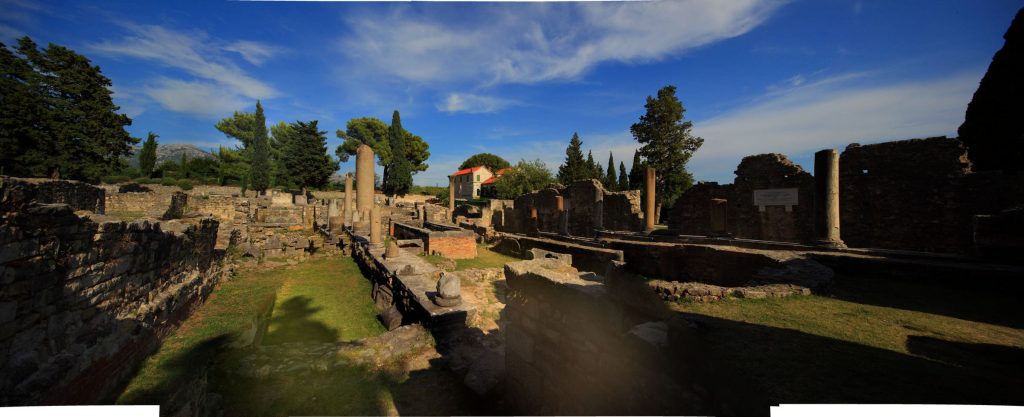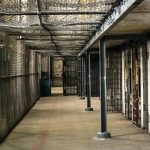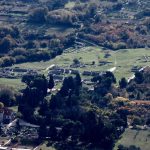“These discoveries and their presentation will soon become a great archaeological sensation like the world-famous Aquileia and Pompeii and will have a significant share in the economic development of the city of Solin,” Radoslav Buzancic, head of the Conservation Department in Split, said for Hina, as reported by Poslovni.
The presentation of the ancient Salona will be developed through the generations and long into the future, he said, noting that some newly discovered finds, such as mosaics, will be presented in the Cultural Centre. “It is not one project, but many projects with the same goal, financed from different sources,” Buzancic pointed out, adding that “the process of the physical presentation of the ancient Salon in the city and outside it is related to future research and spatial planning policies of the city, which the Ministry of Culture and Media has always supported.”
The latest research carried out south of Gospin Otok on the left bank of the river Jadro revealed parts of the city ramparts that give a new image of ancient Salona and show that the city was larger than previously thought. These ramparts, Buzancic explains, stretch south of Gradina to Marko Marulic Street, from where they turn west to Sirina.
The analysis of archaeological research has established, he emphasizes, that Gospin Otok, as well as the entire part of the city to Maruliceva Street, was located inside Salona. In archeological research on Sirina, walls that we know from 19th-century blueprints were found, towers that were not drawn at the time, and economic complexes of buildings within those walls.
The new findings shed an entirely new light on ancient Salona
New finds, not only the ramparts of the southern part of the city, but the sensational finds of monumental buildings and infrastructure, as well as the finds of stone sculptures and sculptures found in these investigations, shed a completely new light on ancient Salona, Buzancic points out.
Among them, he singles out “the imperial building with mosaics between the post office and the monastery of the Sisters of the Handmaids of Little Jesus, the ancient road with a huge canal opposite the same monastery, the large thermal baths that have only been partially explored on the stretch from Tuđmanova Street to the City Administration building, as well as the southern gate of the city which are located under the road in Petra Kresimira IV Street, together with the previously found channel and bridge north of Tudmanova street.”
Salona, Buzancic explains, is a huge Roman city with Illyrian and Greek roots. It was the port of Delmata until the age of Augustus. It began to develop as an important urban center of Illyricum, with new walls and monumental gates, a forum, and temples erected.
The Flavian dynasty left a memory of its rule in the vast arena built west of the old city. In the time of Marcus Aurelius, in the middle of the 2nd century AD, the city, walled with ramparts and towers, reached the size of what, Buzancic notes, was considered the ancient Salona until recently.
“It was a significant city in an important strategic position, the center of Illyria, which was destroyed and rebuilt many times because of this. It flourished in the period from the creation of the Roman Empire to the Gothic Wars, was rebuilt into a large and important late antique center, with the seat of a huge archdiocese that reached to the Sava and the Danube to the north, destroyed by the invasion of the Avars and left to the Croats, who built the center on the ruins of Salona his medieval state”, he explains.
Salona, Buzancic points out, has great importance for Croatian history and statehood, as well as an educational character that brings knowledge of such an important ancient center of the Mediterranean. According to him, it is also a huge Christian archaeological site with a history that goes back to the apostolic times.
Ancient Salona research will continue
The latest discoveries in Salona are the work of the skill and expertise of Croatian conservators. According to Buzancic, who were never behind the Italian ones, Salona was better protected than the famous Pompeii, which experienced great devastation a few years ago when entire parts of attractive ancient buildings collapsed.
“In the past, the buildings in Salona were destroyed so that the enemy army would not use them as fortifications, but the construction was still so solid that despite all that, it was not completely destroyed,” explains Buzancic .
He adds that parts of the architecture partially preserved as ruins were once extremely sensitive to earthquakes. “This can be a great danger, especially if it is a question of slender columns on which parts of a massive structure are located,” warns Buzancic.
In Solin, there have been protective archaeological investigations for years, which, he reminds, necessarily precede construction works and are financed by the Investor. Systematic archaeological research in Salona is financed from the state budget and EU funds, and some research is co-financed by the City of Solin.
Salona’s research will continue. Thus, the insights into the ancient past of the current Solin region will continue to expand. The discoveries bridge the almost two-millennium time gap between the current Solin and the former Salona, a fortress of the Roman Empire in Dalmatia. The exciting archaeological story of Salona turns into a promising magnet for visitors.
For more, make sure to check out our dedicated Travel section.











